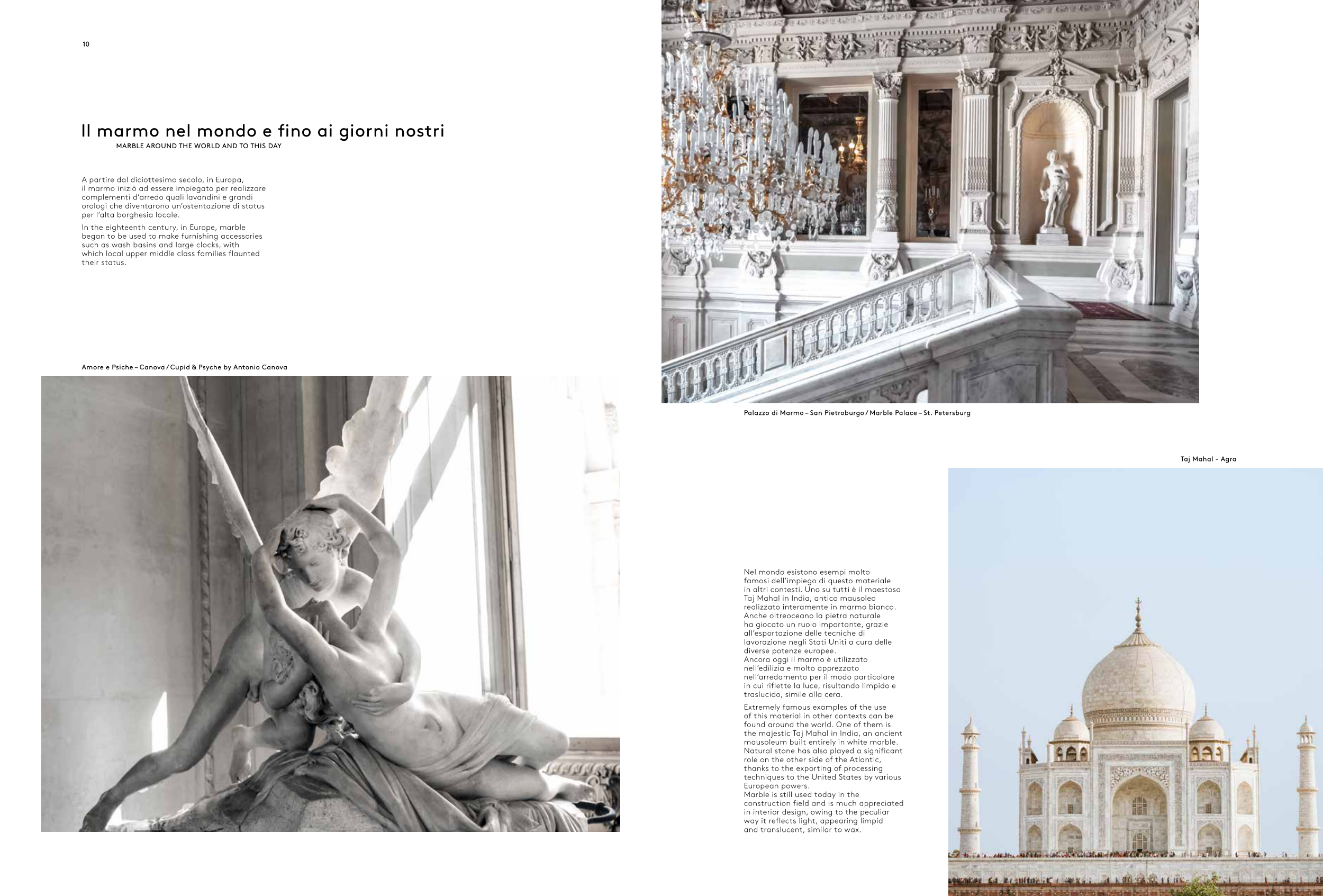Taj Mahal - Agra
Palazzo di Marmo – San Pietroburgo / Marble Palace – St. Petersburg
Amore e Psiche – Canova / Cupid & Psyche by Antonio Canova
Il marmo nel mondo e fino ai giorni nostri
MARBLE AROUND THE WORLD AND TO THIS DAY
A partire dal diciottesimo secolo, in Europa,
il marmo iniziò ad essere impiegato per realizzare
complementi d’arredo quali lavandini e grandi
orologi che diventarono un’ostentazione di status
per l’alta borghesia locale.
In the eighteenth century, in Europe, marble
began to be used to make furnishing accessories
such as wash basins and large clocks, with
which local upper middle class families flaunted
their status.
Nel mondo esistono esempi molto
famosi dell’impiego di questo materiale
in altri contesti. Uno su tutti è il maestoso
Taj Mahal in India, antico mausoleo
realizzato interamente in marmo bianco.
Anche oltreoceano la pietra naturale
ha giocato un ruolo importante, grazie
all’esportazione delle tecniche di
lavorazione negli Stati Uniti a cura delle
diverse potenze europee.
Ancora oggi il marmo è utilizzato
nell’edilizia e molto apprezzato
nell’arredamento per il modo particolare
in cui riflette la luce, risultando limpido e
traslucido, simile alla cera.
Extremely famous examples of the use
of this material in other contexts can be
found around the world. One of them is
the majestic Taj Mahal in India, an ancient
mausoleum built entirely in white marble.
Natural stone has also played a significant
role on the other side of the Atlantic,
thanks to the exporting of processing
techniques to the United States by various
European powers.
Marble is still used today in the
construction field and is much appreciated
in interior design, owing to the peculiar
way it reflects light, appearing limpid
and translucent, similar to wax.
11
10


